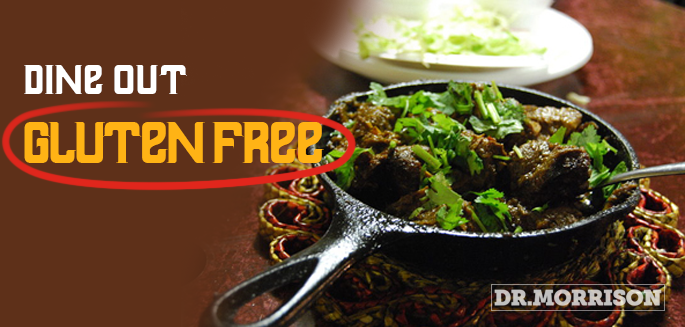
By Dr. Deanna Attai
Dining out with friends and family is a huge part of our culture. But, how do you know what is safe to eat, if you’re on a gluten-free diet?
The part of the gluten-free transition that was hardest for me, and still remains difficult, is dining out. Before I was gluten-free, I purchased a lot of prepared foods. On the weekends, I enjoyed eating at the various restaurants in my neighborhood. After transitioning to a gluten-free diet and spending a lot of time reading and researching, I felt that I was ready to tackle restaurant eating. I hope you can learn something from my experience!
One of my favorite places for lunch on the weekends was a small neighborhood restaurant that served amazing soups, salads, and sandwiches – all fresh organic ingredients and amazing freshly made bread. No problem I thought – I’ll just order a soup or salad, no bread. This particular restaurant made some of the most delicious gazpacho, and it had become my summer Saturday ritual – again, I figured I’d just have the gazpacho without the side order of bread.
During this time, I was learning to cook, and heirloom tomatoes were in season at the local farmer’s market. So, I decided to see if I could master this recipe myself. I found plenty of versions online, and then I got confused. About half the recipes called for putting bread INTO the soup. I had never even thought to ask if there was bread in a soup that I thought was only made with vegetables. The next time I went to the restaurant, I asked. And sure enough, the response was “yes, of course we put bread into the soup, that’s how it’s traditionally made” I ordered a salad – and crossed that place off my list. Lesson learned – never assume, always ask.
In speaking to others that are gluten-free, to friends that are chefs or spent time in culinary school, and in spending more time learning to cook myself, I’ve been made aware of many other times where flour is used in restaurant meals. It shows up in all sorts of unexpected places:
- a light dusting to coat chicken, fish, or meat prior to it being placed on the grill to give a better sear and slight “crunch”
- as a thickener for sauces and salad dressings
- as a thickener for risotto (although my version does just fine with chicken stock and parmesan cheese), and
- in egg “batter” used for scrambled eggs or omelets especially in hotel.
The list goes on.
Initially, this was very depressing, as well as isolating. As I was just starting out gluten-free, and was still fairly sick, I didn’t always feel comfortable being very specific in my questions and requests. It was one thing to ask for “dressing on the side”, but to me quite another to make the announcement “I’m allergic to gluten, please make sure there are no gluten-containing ingredients or contaminants in my meal”. It seemed to draw too much attention to me and my illness, and I was not yet ready for that. I just stayed at home, and made excuses for not going out.
But I couldn’t make excuses forever – having a nice meal out can be a great way to spend time with family and friends, and dining out is often a necessary part of my work-related travel and meetings. For a while, I tried to order foods as simply and plainly as possible, again, trying not to draw too much attention to myself. But after a few episodes of coming home feeling ill (I must have eaten something…), I finally got over my embarrassment, and became much more open with restaurant staff and with my family, friends, and colleagues.
What I do now, if possible, is check out the restaurant online, scan the menu, and try to call ahead. I let them know that I have a gluten allergy, inform them of what I was planning to order, and ask if this will be ok and solicit suggestions. If this is not an option because I don’t know where we’re going, I inform the waiter as soon as possible and ask for advice. For “banquet-style” dinners, I always let my host know in advance.
Response is variable. Some places have stated that “of course we understand, and we’ll have a special meal for you”. I then get a plate of incredibly over-steamed vegetables – someone confused gluten-free with uninspired vegetarian.
On a good night, I’ll receive a plate that looks exactly like one of my fellow diners, and only the waiter knows that mine is a little different – what a treat! Thankfully, more restaurants are clearly marking their menus with gluten-free, vegetarian and vegan options. They even have gluten-free vegan cheesecake, so good that it made this native New Yorker (and cheesecake lover) give up her craving for the real stuff.
It does get easier. I have no problem discussing my gluten “issues” with restaurant staff, and many of my family, friends, and co-workers are now also aware. If I’m with a new group, I keep the explanation short and sweet, and have found that the conversation quickly gets back to normal. In addition, many more restaurants understand and are providing meals that are healthy, delicious, and “safe”. Educate yourself, do your research, and speak up! Your health is too important to take a chance on a restaurant meal that could make you sick.